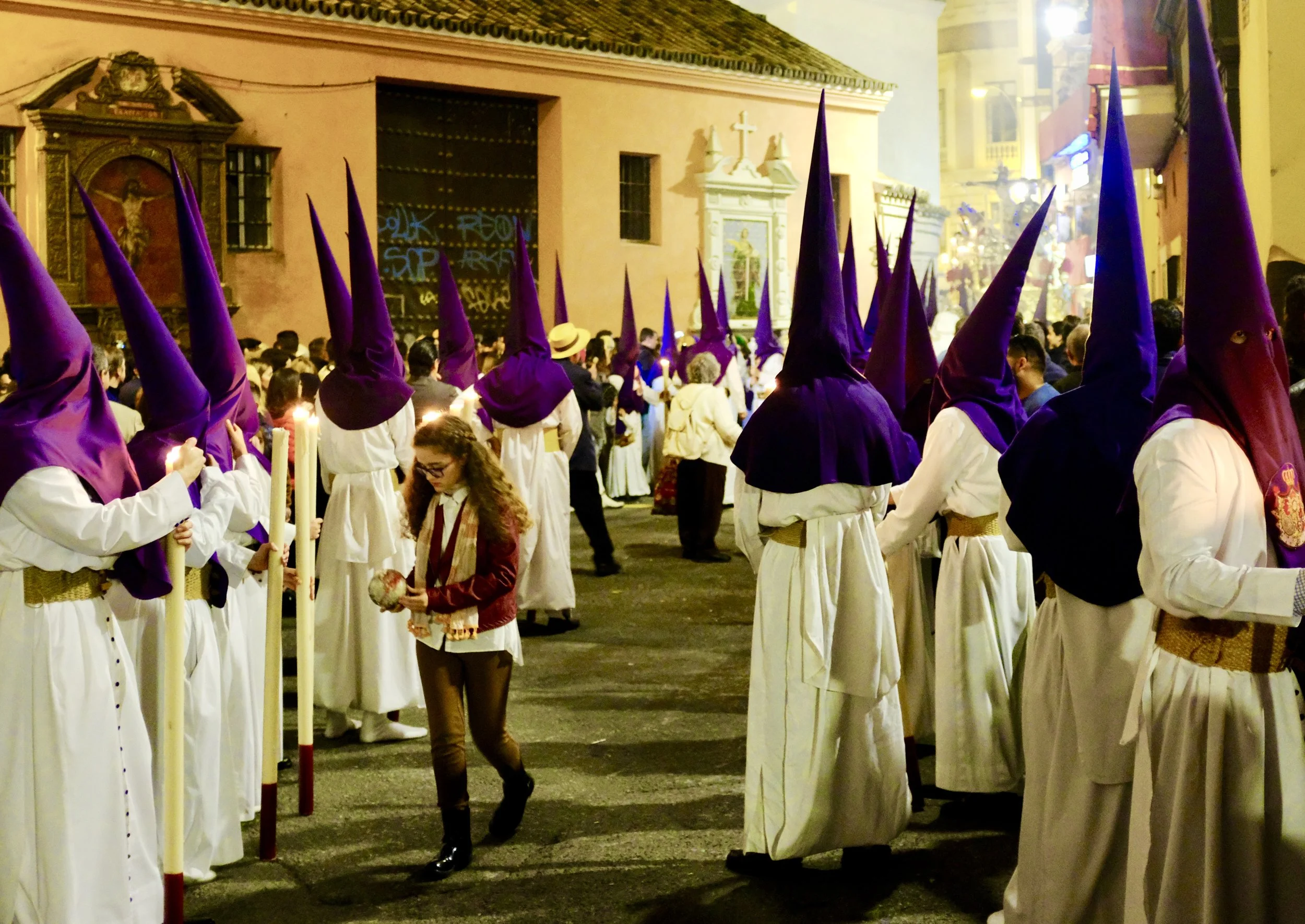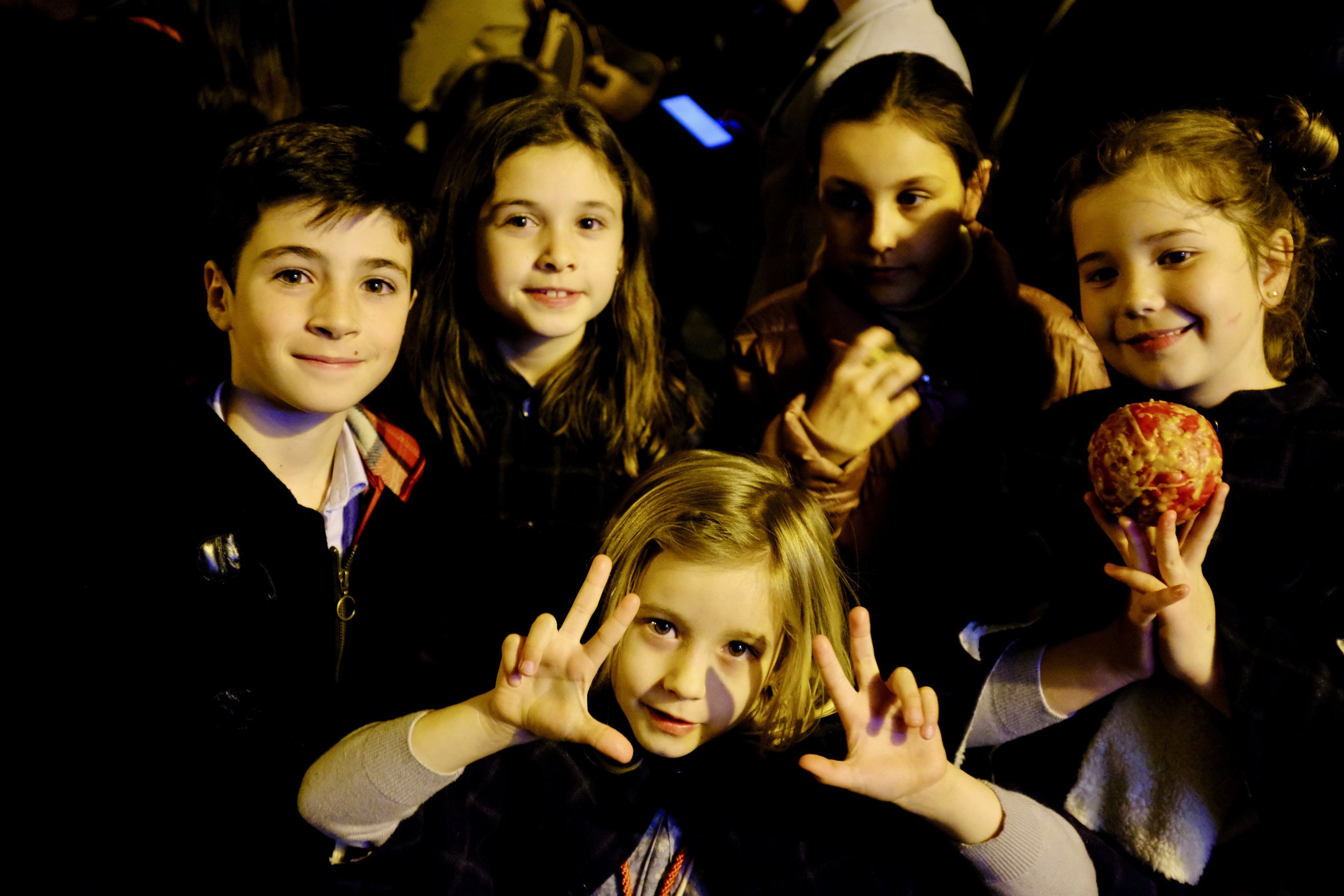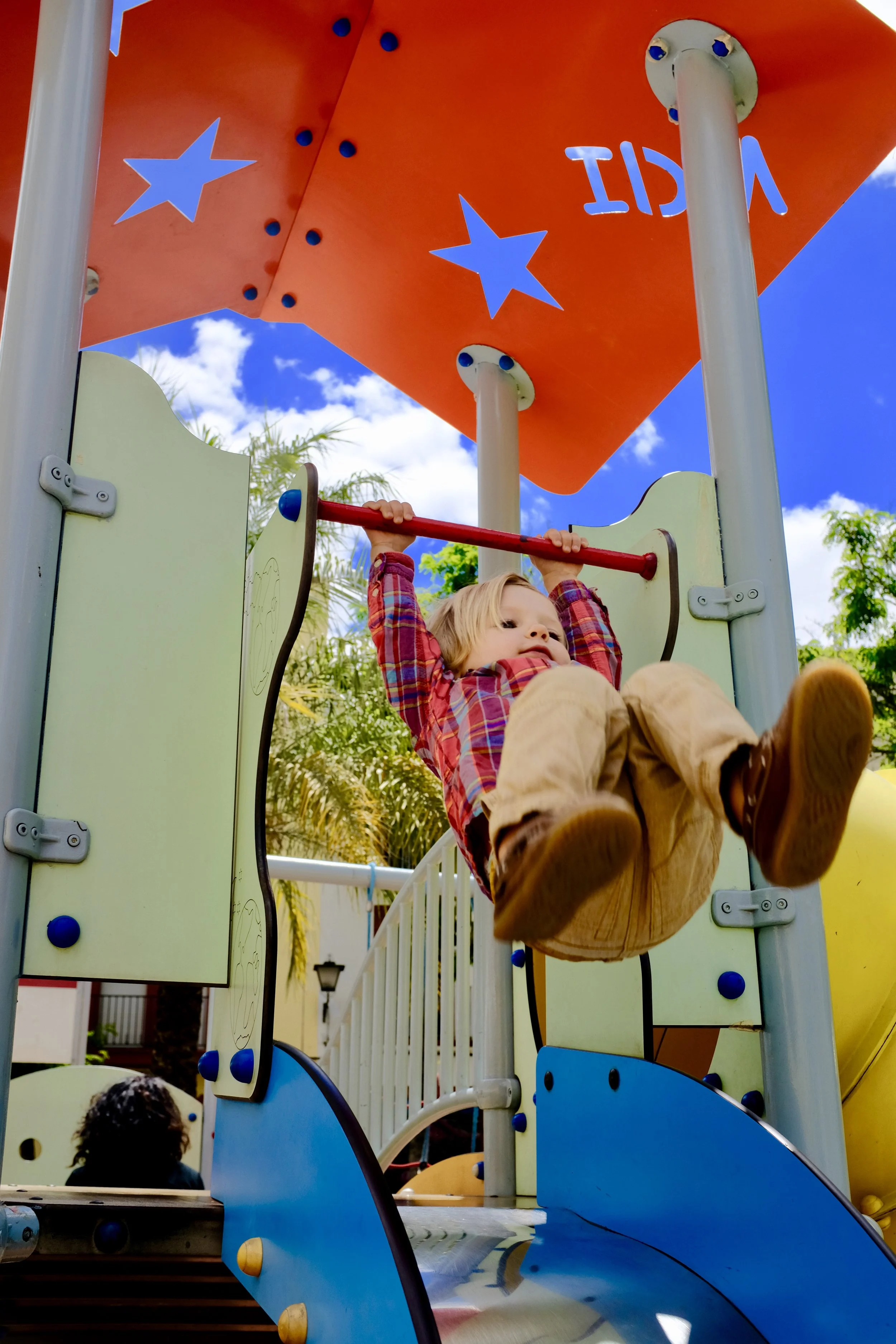Semana Santa in Seville with Families – How to Involve Children
As a former kindergarten and 1st grade teacher, I have a soft spot in my heart for kids. When I witnessed the family focus in the Semana Santa tradition, I was pleasantly surprised and excited to get involved with my son, Jimmy. The night processions and traditions of Semana Santa are the most magical in my opinion. There is an energy in the air when the sun goes down that is hard to describe. It reminds me of the excitement of Christmas time when I was growing up. Overall Seville is a very family friendly city and that definitely shows during their holy week. Jimmy ended up enjoying Semana Santa all because of a few special traditions that they do to involve the kids and keep them excited about the festivities.
Easter Sunday procession where we got to see the resurrected Christ paso.
Wax Ball Tradition
One of my favorite traditions that involves children in Semana Santa is the wax ball tradition. When a child from Seville attends their first Semana Santa they get to start their very first wax ball. The ball of wax starts out very small. Each year as they attend Semana Santa, their ball of wax grows bigger and bigger.
Each procession starts out with the Nazarenos walking down the little narrow cobblestone streets. They wander slowly, waiting until the procession begins. The children, a bit anxious and a bit excited, approach a Nazareno. The Nazarenos can be a bit intimidating to a very young child as their dress often is unfamiliar and unapproachable. They are holding giant candlesticks that are tall enough to use as walking sticks during the procession. The candles are lit. The children, holding their wax ball, lightly tap the Nazareno on the arm to get their attention. When the Nazareno looks down, the chlld holds up their wax ball with a pleading look and politely asks for more wax. The Nazareno grants the child’s wish and takes their tall lit candlestick and very carefully pours the hot wax on the child’s wax ball. The child beams from ear to ear and graciously thanks the Nazareno for making it even just a tad bigger. The Nazareno walks on and the child approaches the next Nazareno in view. Little by little the child adds more wax to their ball, making it slightly grow as the night goes on. The child holds onto their ball, proudly telling people about how big it has grown. The night ends, and the child holds their ball like it's their most sacred possession, excited for the next night to add even more wax to it. By the end of the holy week, the child’s ball looks very different than when the week began and the child couldn’t be more proud.
Each child’s wax ball tells a personal story. There are the children whose parents are devout Semana Santa attendees, and they never miss a year. Those children have the biggest wax balls, having started it when they were very young and growing it more and more each progressing year. Then there are the children whose parents attend less frequently and it shows. Their wax balls are quite puny in comparison. Then there are the children who have lost their wax balls during the year and are forced to start over with the coming of the new Semana Santa, building it from scratch once again like when they were younger.
A little Spanish girl tapping the Nazareno's arm to ask for more wax for her wax ball.
It is no secret where the processions had walked throughout Seville after all the festivities have finished. The secret is out from all of the wax residue all down the streets. There is a ton of wax everywhere – a thick wax layer lining the parade paths. Nothing is done to clean it up. As time goes on, the wax comes off little by little from shoe soles and car tires. Gradually the streets become clean again, without a trace of wax lingering.
Gifts From the Nazarenos
Another tradition that I love about Semana Santa that includes children involves gifts from the Nazarenos. Although quite hidden, the Nazarenos have little gifts inside of the pockets of their robes. Their pockets hold all sorts of different things – hard candies, gummy candies, special candies that are only eaten during the Holy Week, cards with pictures of the different brotherhoods’ Christ or Virgin Mary on them, little tokens or special beads with a religious symbol on them, among other things.
The children approach the Nazarenos with their hand extended, in hopes that the Nazareno will give them a gift. Some of the Nazarenos continue to pass by, but most times the Nazareno will stop, reach in their pocket, pull out a gift for that child, and put it in their hand. The child is giddy with excitement as they dive into their candy wrapper and quickly pop the sweet into their mouth, or start counting the pictures that they have received. When the night is over, the children safely pack their goods into their pockets and journey home.
Jimmy holding all of his goods that he collected from the Nazarenos tightly in his hands.
Jimmy was terrified of the Nazarenos at the beginning of Semana Santa, but as the week went on, and they gave him little gifts, he grew quite fond of them. He got to the point where he would willingly put out his hand as they passed and say, “Candy Please!” He was partial to the edible gifts, and I didn’t blame him. They were quite delicious. I might have stolen a few for myself when he wasn't looking.
The look that Jimmy got on his face when he realized that the Nazarenos gave him candy and presents and weren't so scary after all.
Mom Tips For Surviving Semana Santa with a Child
There were two things that got Jimmy through the week. First, we had him wear noise-cancelling headphones. Semana Santa as a whole is a very loud event. There are people everywhere talking and anxiously waiting for the next procession to begin. Each procession has a band (with the exception of El Silencio, my favorite brotherhood procession to watch, read more about it here) with loud brass instruments playing near you. It was loud even for adult ears! The noise-cancelling headphones totally saved his ears and us! He wore them during each procession, and it helped to calm him. I would highly recommend purchasing some if you are headed to Semana Santa with a young child.
Second, Nate and I prepped him mentally before each procession would start. We would tell him, “Jimmy, the statues of people are just fake, not alive. They are just pretend.” I can’t count how many times we said this type of phrase to him. If you think of the Nazarenos and the Christ / Mary statues on the pasos as real, to a toddler, especially an American one who hasn't been exposed to Semana Santa before, it would be quite terrifying. So when we prepped him beforehand and told him that it was, “just fake,” he handled it a lot better. The tears stopped. It totally switched his mind frame and made him be able to handle all the aspects of Semana Santa with a smile.
If you haven’t attended a Semana Santa before, the one in Seville is a great one to go to. Don’t be afraid to bring your children with you. I know they will enjoy it if you have them participate in the local traditions for families. Feel free to comment below if you have any questions!





















